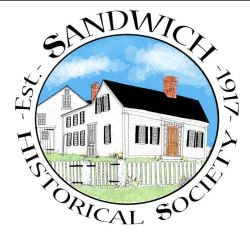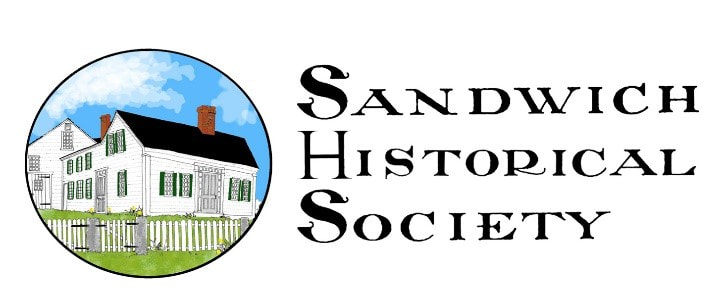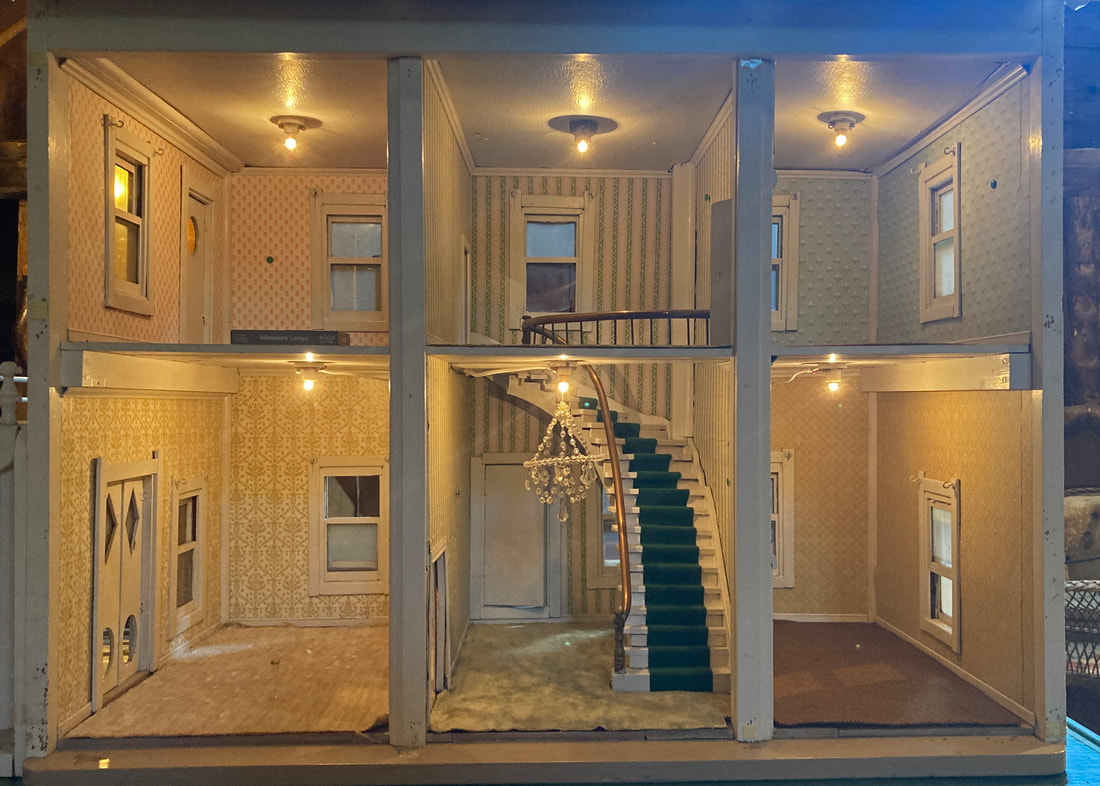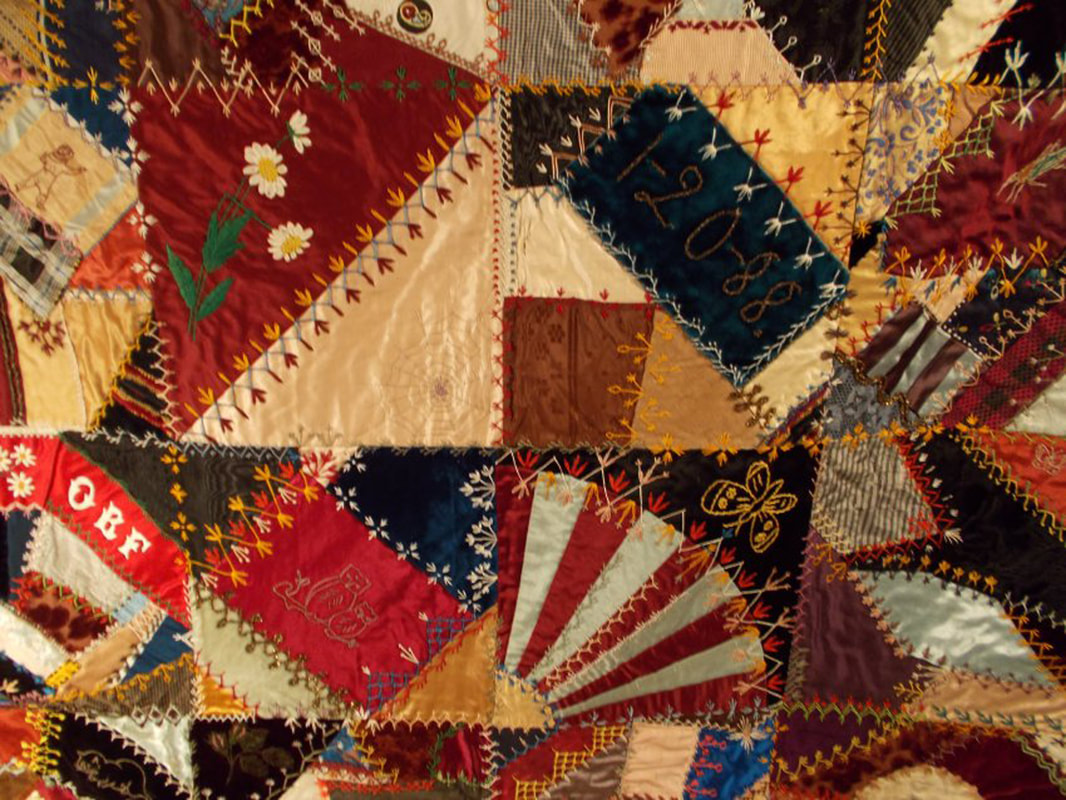HIGHLIGHTS
FROM OUR COLLECTION
#AskAConservator Day
(Friday, November 3)
Update: Watch this video Northeast Document Conservation Center (NEDCC / Andover, MA) made for this special day featuring the work done on our passport.
(Friday, November 3)
Update: Watch this video Northeast Document Conservation Center (NEDCC / Andover, MA) made for this special day featuring the work done on our passport.
Members and Friends,
This Friday, November 3, is #AskAConservator Day. Northeast Document Conservation Center (NEDCC) has chosen to feature the work they are doing on our 180 year old passport.
This passport allowed one of our favorite Sandwich artists, Albert Gallatin Hoit, to travel to Europe to study and practice art.
Below are a self-portrait of the artist as a young man, and the pre-conserved passport.
We are grateful to NEDCC for their work thus far, and IMLS for funding the project through their Inspire! Grants for Small Museums.
Come visit us in 2025 when we display the passport and other conserved objects from our collection, and discuss the importance of conservation in terms of accessibility to objects of historic importance and our responsibility of stewardship.
This Friday, November 3, is #AskAConservator Day. Northeast Document Conservation Center (NEDCC) has chosen to feature the work they are doing on our 180 year old passport.
This passport allowed one of our favorite Sandwich artists, Albert Gallatin Hoit, to travel to Europe to study and practice art.
Below are a self-portrait of the artist as a young man, and the pre-conserved passport.
We are grateful to NEDCC for their work thus far, and IMLS for funding the project through their Inspire! Grants for Small Museums.
Come visit us in 2025 when we display the passport and other conserved objects from our collection, and discuss the importance of conservation in terms of accessibility to objects of historic importance and our responsibility of stewardship.
Inspire! Grant for Small Museums by the Institute of Museum and Library Services (IMLS)
The Sandwich Historical Society (SHS) has been awarded a $27,400 Inspire! Grant for Small Museums by the Institute of Museum and Library Services (IMLS). The IMLS is an independent federal agency that provides library grants, museum grants, policy and development assistance and research. The Inspire! Grant for Small Museums program is a nationwide competitive initiative of the Museums for America program.
Lauren Hansen, Museum and Collections Coordinator for the SHS, indicates that the grant will be used to stabilize and conserve five objects in our collection. These objects include three oil paintings by Enoch Wood Perry, a nationally recognized artist who summered in Sandwich in the early years of the twentieth century. Also, a nineteenth century passport that belonged to Albert Gallatin Hoit, a native of Sandwich, who became a noted portrait painter in the Boston area after traveling in Europe. Finally, an early nineteenth century secretary desk that belonged to the Beede family, one of the original founding families of Sandwich. The grant also includes funds for improved display options and support for an exhibit to explain the conservation and restoration process that the SHS uses.
Founded in 1917, the Sandwich Historical Society is a 501 (C) (3) non-profit organization whose mission is to collect and preserve the material culture and historical record of the town of Sandwich, and to use these resources in service to the public through education experiences and outreach to the community.
The Institute of Museum and Library Services is the primary source of federal support for the nation's libraries and museums. We advance, support, and empower America's museums, libraries, and related organizations through grantmaking, research, and policy development. IMLS envisions a nation where individuals and communities have access to museums and libraries to learn from and be inspired by the trusted information, ideas, and stories they contain about our diverse natural and cultural heritage. To learn more, visit www.imls.gov and follow us on Facebook and Instagram.
www.facebook.com/USIMLS
www.facebook.com/SandwichNHHistorical
For more information, contact Lauren Hansen at the Sandwich Historical Society at 603-284-6269.
Lauren Hansen, Museum and Collections Coordinator for the SHS, indicates that the grant will be used to stabilize and conserve five objects in our collection. These objects include three oil paintings by Enoch Wood Perry, a nationally recognized artist who summered in Sandwich in the early years of the twentieth century. Also, a nineteenth century passport that belonged to Albert Gallatin Hoit, a native of Sandwich, who became a noted portrait painter in the Boston area after traveling in Europe. Finally, an early nineteenth century secretary desk that belonged to the Beede family, one of the original founding families of Sandwich. The grant also includes funds for improved display options and support for an exhibit to explain the conservation and restoration process that the SHS uses.
Founded in 1917, the Sandwich Historical Society is a 501 (C) (3) non-profit organization whose mission is to collect and preserve the material culture and historical record of the town of Sandwich, and to use these resources in service to the public through education experiences and outreach to the community.
The Institute of Museum and Library Services is the primary source of federal support for the nation's libraries and museums. We advance, support, and empower America's museums, libraries, and related organizations through grantmaking, research, and policy development. IMLS envisions a nation where individuals and communities have access to museums and libraries to learn from and be inspired by the trusted information, ideas, and stories they contain about our diverse natural and cultural heritage. To learn more, visit www.imls.gov and follow us on Facebook and Instagram.
www.facebook.com/USIMLS
www.facebook.com/SandwichNHHistorical
For more information, contact Lauren Hansen at the Sandwich Historical Society at 603-284-6269.
Mrs. Marston's Dollhouse
Friend of SHS, Carl Hansen, installing a new transformer and fresh light bulbs to bring renewed energy to the house. Come for a visit this summer to see how these rooms look once they're furnished!"
Located on the second floor of the Elisha Marston house barn, Mrs. Marston Heard (Doris), from New Castle and Manchester, gifted her childhood dollhouse to the Society. According to Trish Heard in 1998, Mrs. Marston bought the dollhouse and spent many years working on it and furnishing it. In 1996, the dollhouse traveled to Portsmouth to be on display.
The dollhouse sits on a stand (20" x 50") and is a two-story, six room, Victorian house with a central staircase and a two-story porch.
Come see this beautiful dollhouse on display during our summer exhibit, "Tiny Treasures, Great Joys".... June 24 - September 2, 2023.
The dollhouse sits on a stand (20" x 50") and is a two-story, six room, Victorian house with a central staircase and a two-story porch.
Come see this beautiful dollhouse on display during our summer exhibit, "Tiny Treasures, Great Joys".... June 24 - September 2, 2023.
MARIAN GREENE BARNEY
Marian Greene Barney was an artist, designer and illustrator of children’s books. Born in Minnesota, she was the second child of Jennie and Oscar Greene, a telegraph operator for the Northern Pacific Railway. As a young woman, she moved to Pennsylvania to study art at the Pennsylvania Academy of Fine Arts from 1913 to 1915. It was there that she met her husband, William Pope Barney, a prominent architect. Together they lived and traveled widely around the world. Often, she would collaborate on designs with her husband and received recognition in the American Institute of Architects yearbook for her design work on the home of Carl H. Chaffee in Swarthmore, PA.
What brought them to find Sandwich is unknown but in 1937, they purchased the Jonathan Watson place on Taterboro Road in East Sandwich. They fully restored the house and out buildings, turning the latter into studio spaces for both their architectural design work and painting. The house was renamed ‘Stillness’ and the couple spent many leisurely summers there and became involved in numerous activities around town; they were patrons of the East Sandwich Chapel, board members of the PTA, members of the Historical Society as well as cordial hosts and neighbors.
In 1958, the Barneys moved to Sandwich permanently. The following year, after Pope was elected President of the Sandwich Historical Society, they hosted the annual picnic at their home on Taterboro Road along with their neighbors, Marion and Aldrich Taylor. Marian Barney also played an important role in the 1966 Excursion Bulletin, in which she wrote of the paintings in the Society’s collection.
This 1956 self-portrait, seen here, is part of the SHS collection, donated by the Barney’s estate in 1970. In it, she nods to a classic motif in self-portraiture; presenting herself holding a paintbrush. The Chinese characters may also represent a facet of Marian’s life; however, they have not been translated, so for now, they remain a mystery.
PAINTED TREE FUNGUS
~ Annie C. and Me ~
My grandmother was larger than life, but when her husband, Rev. Chester Howe passed away in 1952, Annie C. Howe lost her partner and the companionship in which she thrived. Of course, the Lynn Baptist Church community, to which she belonged for more than twenty years, was there for her in her grief. Her duties as the pastor’s wife gave her purpose and responsibilities but they ended with his death. In an interesting, and some would say fortuitous turn of events, I entered her world in January, 1953, only a few months after Chester’s death.
At that time, my family lived on Atlantic Terrace in Lynn, Massachusetts. Our house sat directly across from Lynn Beach and our front windows opened to an ocean breeze and an unobstructed view of the Atlantic Ocean. Annie lived on the third floor. She became my caregiver, relieving my mother of some of the responsibilities as she dealt with three older children. I was her purpose and responsibility and, in many ways, her partner in life.
Within months of my birth we were in Sandwich for the summer, up on Howe Hill in the cottage my grandparents built. It was a different kind of world than the sandy Lynn beach, the constant beating of ocean waves, and the sea-life, busily getting on with life. Nestled within the majestic Pines and the endearing Birches on Diamond Ledge with grand views of the White Mountains, my grandmother was, once again, the master of her universe and she re-acquainted herself with her life’s work: the wispy watercolors on paper and the heavy oils painted on anything to which it would adhere.
At that time, my family lived on Atlantic Terrace in Lynn, Massachusetts. Our house sat directly across from Lynn Beach and our front windows opened to an ocean breeze and an unobstructed view of the Atlantic Ocean. Annie lived on the third floor. She became my caregiver, relieving my mother of some of the responsibilities as she dealt with three older children. I was her purpose and responsibility and, in many ways, her partner in life.
Within months of my birth we were in Sandwich for the summer, up on Howe Hill in the cottage my grandparents built. It was a different kind of world than the sandy Lynn beach, the constant beating of ocean waves, and the sea-life, busily getting on with life. Nestled within the majestic Pines and the endearing Birches on Diamond Ledge with grand views of the White Mountains, my grandmother was, once again, the master of her universe and she re-acquainted herself with her life’s work: the wispy watercolors on paper and the heavy oils painted on anything to which it would adhere.
Annie and baby Marion, 1919
Nature was her subject and often a canvas. Her walks in the woods generated all manner of objects on which she would paint; Birch fungus, rocks with interesting shapes, pieces of wood. She would reanimate the lifeless with images of Chocorua, a lily pad on a pond, a moose feeding at the water’s edge. Back in Lynn, she sat at her window overlooking the Atlantic and painted, mostly with watercolors, the sailboats catching an ocean breeze, fishermen casting their nets or angling from the beach. The oils came out for the collection of driftwood, sea shells, and other objects collected on her daily walks on the beach.
Annie had learned to make ends meet, having lived through the depression with a family on the meager salary of a young minister. She began a long relationship with the Sandwich Home Industries, dedicating a portion of every day to produce her trademark artistic expression: small notecards decorated with a watercolor scene. Thousands of those cards must have been produced and sold at the Industries through the years.
Annie had learned to make ends meet, having lived through the depression with a family on the meager salary of a young minister. She began a long relationship with the Sandwich Home Industries, dedicating a portion of every day to produce her trademark artistic expression: small notecards decorated with a watercolor scene. Thousands of those cards must have been produced and sold at the Industries through the years.
Most of the time I was there in my crib and, later, playing at her feet, or in the stroller that she pushed through the soft sand to the hardened tidal sand at the water’s edge. It is at her side, she sitting at her work table and me straining to see what she was doing, that I have my earliest memory of life.
It was inevitable that my curiosity would lead to my own set of paints and paper. She would guide my hand to show how the colors would merge with the flow of water on the paper. She would point out at the open ocean and the sailboat leaning away from the wind, sails full, the captain steering with a tiller and a wake of disturbed water merging with the reflected sun. That image hangs on the wall above my desk, a four-year old’s amateur attempt, but proudly signed in the lower right corner: Carl…four years old.
It was inevitable that my curiosity would lead to my own set of paints and paper. She would guide my hand to show how the colors would merge with the flow of water on the paper. She would point out at the open ocean and the sailboat leaning away from the wind, sails full, the captain steering with a tiller and a wake of disturbed water merging with the reflected sun. That image hangs on the wall above my desk, a four-year old’s amateur attempt, but proudly signed in the lower right corner: Carl…four years old.
I moved away with my family when I was five, leaving Annie to move on with her life, dividing her time between Lynn and Sandwich. Still, my happiest memory is our car climbing the gravel driveway up Howe Hill, the white cottage ahead, my grandmother standing at the front door greeting us with a wave. Even though we moved from Lynn, my summers in Sandwich remained steadfast and left me secure, under the influence of Annie C.
Carl Howe Hansen
September 2020
Carl Howe Hansen
September 2020
Annie, third from the left, with her family at The Studio, 1929
C R A Z Y Q U I L T
This quilt is in a style that became popular in the 1880s, likely due to the fascination of the asymmetrical art found in the Japanese pavilion at the Philadelphia Centennial Exposition. Add to the Japanese asymmetry, a love for English embroidery styles, and perhaps the Victorian desire to surround themselves with trinkets and tchotchkes; the result is the hyper-busy design of the crazy quilt.
Ora Belle Farrar Heard's Crazy Quilt
Ora Belle Farrar also caught the crazy quilt up in this fad. This quilt is an example of a crazy quilt that she made in her early twenties. The materials she used include; silks, velvet and cotton, with embroidered animals, flowers and shapes, as well as her initials, O.B.F. and a date, which we believe to be the completion of the quilt. The quilt is hand sewn and embroidered, and created more as a display piece rather than a functional blanket.
Ora Belle Farrar Heard came from Phillips Maine, where she was born in 1864. She came to Sandwich and married Arthur M. Heard. They lived on Maple Street in the Center Village.




















